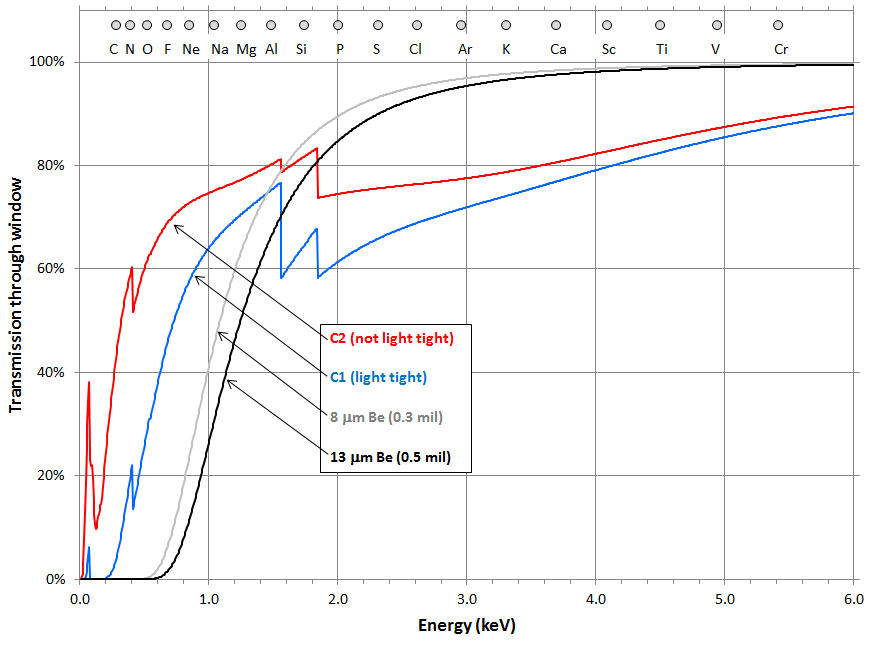 与聚合物窗口不同,专利
与聚合物窗口不同,专利
C 系列窗口不透水Amptek 专利“C 系列”X 射线窗口通过采用氮化硅(Si3N4)和铝涂层,将硅漂移探测器(SDD)的低能量响应扩展到了硼(B);它们只被用在我们的 FastSDD® 上。
Amptek 在推出第一款热电制冷探测器的同时也推出了一种液氮的替代物。现在,通过专利“C 系列”,我们为常规 XRF 分析提供了一种替代铍(Be)窗口的产品,与软 X 射线分析的聚合物窗口相比,它具有更高的性能。
应用
C1 窗口:实验室、台式和手持式仪器。 此窗口不透光,因此可以在普通的室内光线下使用。
C2 窗口:真空应用和扫描电子显微镜(SEM)中的 EDS(EDX)。 C2 窗口在最低能量下效率更高,但是会透光,因此必须在黑暗环境中使用。

Amptek 低能量专利“C 系列”X 射线窗口
 该图显示了 NICER X 射线定时仪器上的 Amptek FAST SDD®,其中 C2 窗口在安装遮光罩之前安装在焦平面上。鸣谢:NASA/Keith Gendreau
该图显示了 NICER X 射线定时仪器上的 Amptek FAST SDD®,其中 C2 窗口在安装遮光罩之前安装在焦平面上。鸣谢:NASA/Keith Gendreau